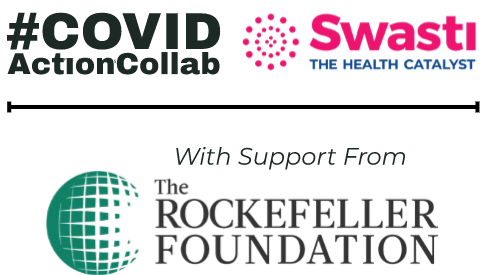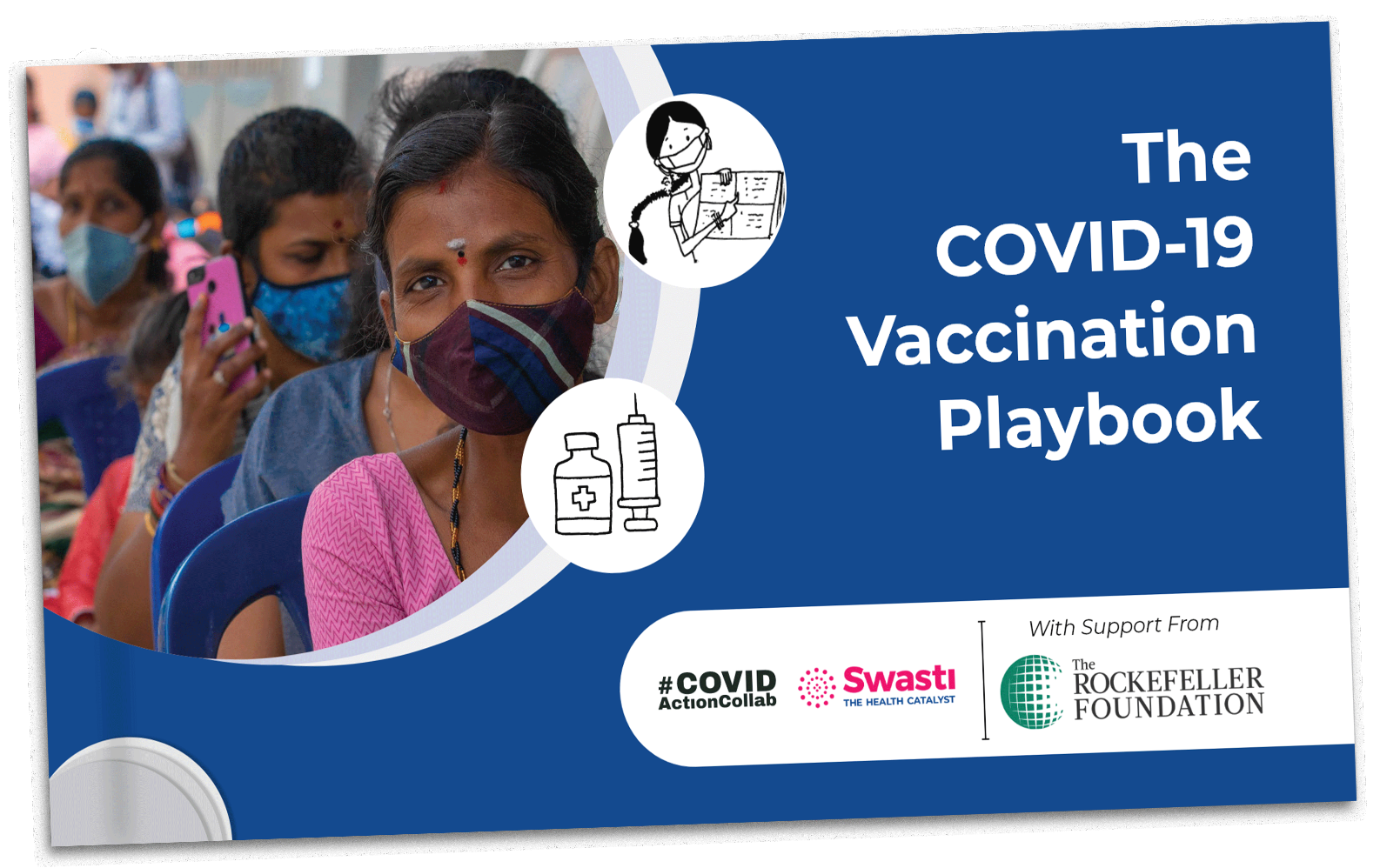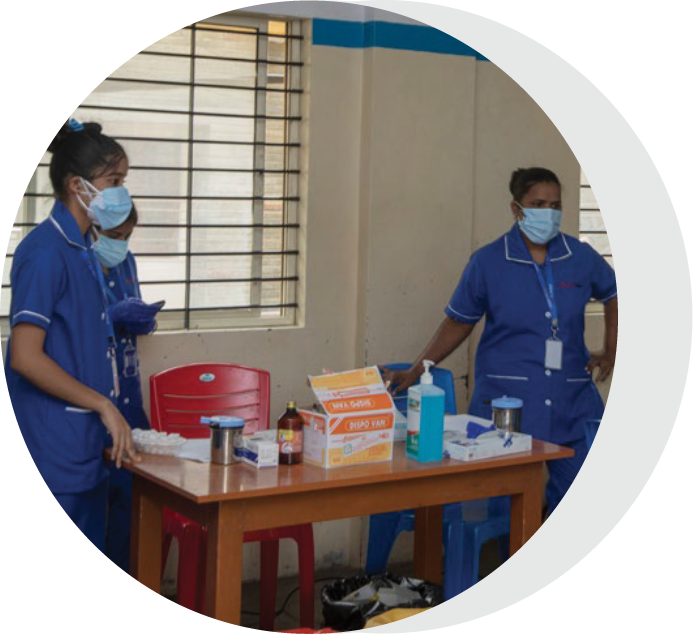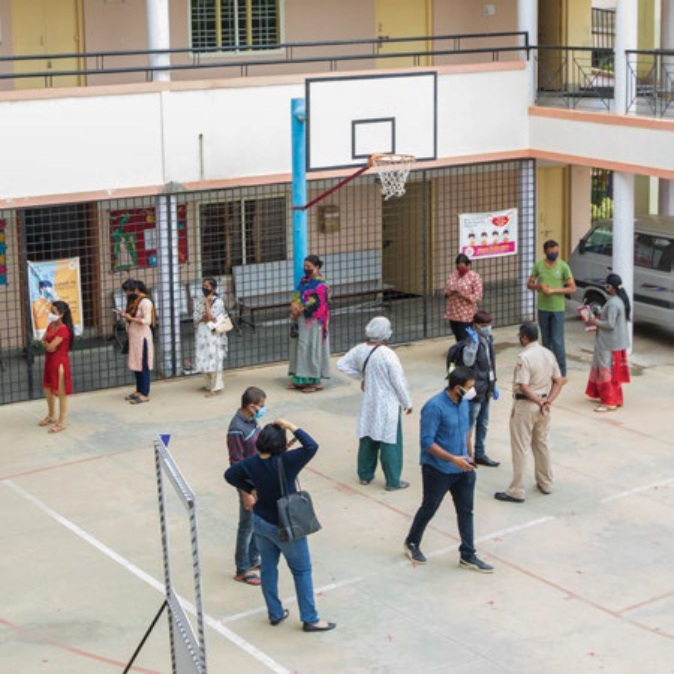


What is a playbook?
A playbook includes "process workflows, standard operating
procedures, and cultural values that shape a consistant
response-the play." it borrows from some of the aristotelian
elements of the play -
Plot - The arrangement of events or incidents on the stage. The plot is composed of "clearly defined problems for characters to solve."
Character - The agents of the plot. the people
Theme - The reason for the play. The purpose
Foreword
Executive Summary

watch this video
watch this video
Many community members are also hesitant to get vaccinated due to lack of sufficient knowledge dissemination and awareness and an inability to access nuanced, trustworthy information about genuine questions and concerns. A few reasons that lead to increased hesitancy and indifference are misconceptions, negative messaging, fears, social and gender barriers.
I am old and live with my grandchildren who are very busy and don’t have time to take me for the second dose. I came here with help from a neighbour but now I don’t have a phone and the OTP has gone to my grandson who is not responding. I will have to return without vaccination. I am not sure if I can come back again.

I am a woman. I do not have permission to get vaccinated from my family. We are unsure of its long-term impacts
I am not sure of its safety. My friend fell sick after getting the shot. I would like to observe first.

My mother had a heart surgery six years ago and I am not sure if I should her to get a vaccine. I don't know if it will react with her current medication or make her condition worst.
No One is safe till EveryOne is safe
Marginalised Communities are most likely to be left behind when Vaccination Outreach Programming is top-down and designed for the general population. A large proportion of the population needs protection and access but also special considerations and an enabling environment for that access to be experienced.
There are typically 2 pronged issues:
Low perceived risk of COVID-19
No One is safe till EveryOne is safe

In order for marginalised communities to have access to health care, the following conditions must be met:
A community representative is a member of a community who has been nominated by the said community to represent its interests.
The role of the community representative is to represent the interests of the community and involve the community in decision-making processes, for instance, by attending local committees and advocating for the communities needs and wishes for change (Goswami, 2020).


Nothing for us without us
We have learnt that the best and most effective ways of planning for and rolling out Vaccination for the most marginalised is to ensure that the design is
The Vaccination Drive Playbook offers guidance to help community organisations implement the vaccination drive for vulnerable populations at the local level in partnership with other NGO/CBOs, Medical/Clinic teams, volunteers. The document outlines the steps required for conducting the community vaccination drive and details out the activities that can be undertaken for smooth planning and rolling out of the vaccination drive.
In the playbook you will find:
The playbook divides the entire process into 3 Acts, which are as follows:
Stronger Together




What do they need?
Who can they be in your community?
Local leaders, youth groups, religious spaces (if not contentious) can be leveraged as resources and their involvement could help mobilise individuals who otherwise would not access care at health centers. Local resources for transport for those that can not afford it can also be mobilised.




CLINICAL TEAM: Doctors, Nursing staff, Ambulance staff
What do they need to know:
If the clinical teams are not used to working with vulnerable populations it’s important to have sensitisation sessions (importance of providing respectful care and its impact)
Many of those with alcohol dependency returned from the vaccination camp without taking the vaccine because their questions about reactions with alcohol were not answered or they were told that they could not drink for long periods if they took the vaccine.
Who are they: Local volunteers, Frontline staff from NGO/CBOs, Self Help Group members, Youth Club volunteers, Civil defence staff such as home guards and others can perform critical functions such as crowd control, data entry, supporting those with special needs, ensuring safety of VPs and respectful treatment, ensuring COVID appropriate behaviours etc.
What do they need to know:

Situationally aware camp management:
Anticipate interference and disturbances and have community
leaders and senior managers at hand who can handle issues as
they come up.
Security: Using or alerting local police or other security agencies during large camps is key to ensure safety of staff and beneficiaries. Dynamics of certain populations with security forces must be considered to ensure people do not avoid camps due to their presence.
| Role Title | Station/Number of People | Responsibilities | |
|---|---|---|---|
|
Community Mobilisation
|
-
|
|
|
|
Crowd Management
|
At the gate - 2/3
|
|
|
|
Queue Control
|
2/3
|
|
|
| Role Title | Station/Number of People |
Responsibilities | |
|---|---|---|---|
|
Registration
|
2/3
|
Collect the identity proof of the member and register on CoWIN | |
|
Verification
|
1
|
Verify the member on CoWIN against their identity card |
|
|
Medical
|
Medical professional - 1
professional - 1/2 |
|
|
| Role Title | Station/Number of People | Responsibilities | |
|---|---|---|---|
|
Observation
|
In the
waiting room or station - 1/2 |
|
|
|
Coordination
|
1
|
|
|
|
Safety
|
1
|
|
|
Accessible | Affordable | Available


Many of those with alcohol dependency returned from the vaccination camp without taking the vaccine because their questions about reactions with alcohol were not answered or they were told that they could not drink for long periods if they took the vaccine.
| Planning Phase | Pre-Vaccination Phase* |
Vaccination Phase | Post-Vaccination Phase |
|---|---|---|---|
|
Partner |
Advocacy campaigns & IEC materials |
Ensure Vaccination |
Follow |
|
Decide population group to vaccinate |
Availability of supplies and materials |
Verification |
Data |
|
Location |
Team identification and training |
Registration |
Team debrief |
|
Approvals and permissions |
Internal team consultation on necessary actions |
Vaccination Observation/ Waiting Vaccination Process |
Sanitise site, dispose waste |
*Listed activities doesn’t have to occur in same sequence and can even occur simultaneously
Planning
Pre-Vaccination Phase
Vaccination Phase
Post- Vaccination Phase